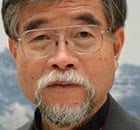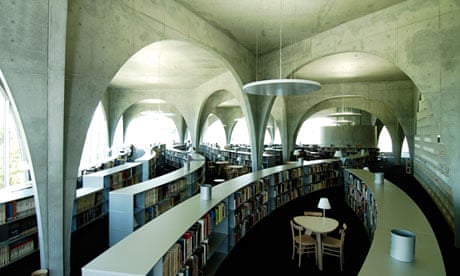
Tama Art University's new Hachioji library designed by Toyo Ito, winner of the 2013 Pritzker Prize, was completed in 2007. The building, constructed of reinforced concrete arches and glass, is a dramatic symbol of the university's commitment to the spirit of 'freedom and will' which we see underpinning all creative art. Hisui Sugiura – the founding president of our university in 1935 – was a leading figure in advertising design and dedicated to a new style of art education, which has continued today in the university's commitment to project based learning, combining the study of art theory and history with studio and practical work.
Buildings encourage creativity
A university library has a special role to play in an art university, where staff and students think about and create artworks in a wide variety of media. It is a place where people come to relax, to contemplate, to search for materials and ideas. In the case of the Hachioji library, the building also serves as an inspiration to members of the university community. Glass walls seem to float from the concrete arches, which shape both the outer and inner structures of the building. While the design creates great open spaces throughout the building, constructing that space required technical innovation.
The building itself is a learning site for students who can see how a master architect created a building that would complement its location. Fujie Kazuko, who designed the furniture for the new library building, also faced many technical and aesthetic challenges. Toyo Ito wanted the building to follow the natural slope of the land, so Kazuko had to design sofas and benches for the first floor that would sit comfortably on the sloping surface. She also designed library shelves that reflected the arch design of the building.
Collecting specalised materials
One of the main tasks of the library is collecting and providing materials for academic staff and students. The university's collection of 146,000 volumes is not so large by the standards of many university libraries, but much of its collection consists of specialised materials in the fields of art and design. The library has spent time, effort and money creating a comprehensive collection of illustrated volumes, including a large collection of catalogues from art exhibitions and catalogues of the works of individual Japanese and international artists working in many different media.
For the students and academic staff of an arts university, creative work is at the centre of everyday life, and the library provides space for art and design exhibitions. The arcade gallery is used for exhibitions, but also for evaluation sessions where the work of staff and students is displayed for group evaluation. Students and staff are still experimenting to find the best ways to make full use of all features. As they move beyond the functions of a traditional library, the Tama Art University community is learning to live in and fully exploit the resources of itslibrary space.
A space to relax
The library serves the university community in various other ways as well. When Toyo Ito designed the library, he wanted students to find space where they could relax. At one end of the library he created an open space where students could sit, recline, or even sleep, if that is what they wanted to do. The open space and feeling of freedom in the library has met this goal. In 2006, the old library had 38,000 visitors, while in 2012 the new library recorded 86,000 visits.
And what kind of problems does the library staff face working in a library designed by one of the world's leading architects? Aside from learning to be careful when posting notices and posters to avoid damaging the building or distracting from its sweeping lines, there's also the problem of an increasing number of visitors. While the library was designed to serve the university community, its beauty has attracted visitors who want to see a building that has been featured in architectural magazines.
Hidemi Kondo is professor of art history and head of the library at Tama Art University
This content is brought to you by Guardian Professional. To get more articles like this direct to your inbox, become a member of the Higher Education Network.

Comments (…)
Sign in or create your Guardian account to join the discussion